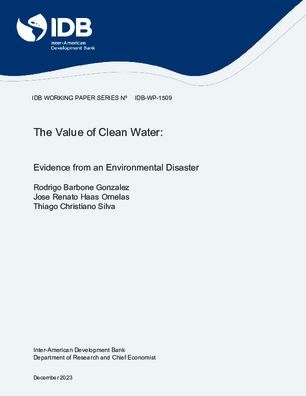The Value of Clean Water: Evidence from an Environmental Disaster
Date
Dec 2023
Clean water has a largely unknown economic value, particularly to small communities whose agricultural activities take place on river shores. In November 2015, the rupture of a mining tailings dam in the municipality of Mariana led to a record disposal of toxic residuals in southeast Brazil. A mud avalanche ran out for 600 km (373 miles) until it reached the Atlantic Ocean, leaving behind extreme ecological and economic damage in the Doce River basin. This is the largest environmental disaster in Brazil to date. We quantify the negative externalities using rich, identified, and comprehensive data from firm-to-firm electronic payments and individual-level consumer credit usage. We find that agricultural producers in affected municipalities received cumulatively 41% to 60% fewer inflows (income) from customer firms outside the affected zone three years after the disaster. Effects are driven by municipalities where the river shore is larger relative to the farming area. In these municipalities, individuals also faced an 8% fall in their credit card and consumer finance expenditures. This result is stronger for non-formal and high-risk workers. Thus, water contamination led to (first) production and (later) consumption decline with real effects on municipality-level agriculture and services output, causing a 7% decline in local GDP.




